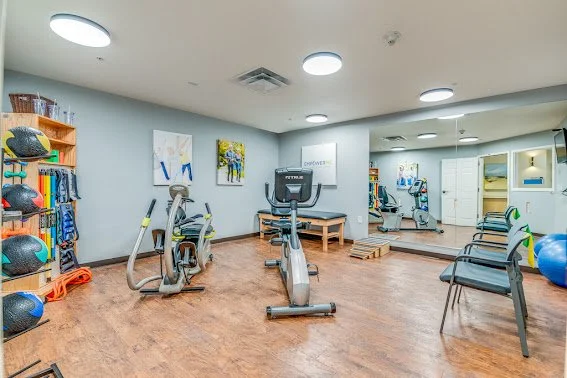Simple Exercises for Seniors to Improve Balance and Stability
Good balance is not about doing tricky moves. It is about teaching your body to react a little faster and stand a little steadier. Ten to fifteen minutes a day can make walking, stairs, and getting out of a chair feel easier. Before you begin, clear a small space, wear supportive shoes, and stand near a counter or sturdy chair in your assisted living lakewood apartment for light support.
Sit to stand
Sit tall in a chair with feet under your knees. Lean slightly forward and press through your heels to stand. Step back until you feel the chair and sit with control. Start with 8 to 10 repetitions. This builds leg strength, which is the base of balance.
Heel to toe walk
Stand at the counter. Place one foot directly in front of the other so the heel touches the toes. Walk 10 to 15 slow steps, then turn and return. Keep your eyes forward. This improves stability on narrow surfaces like curbs.
Weight shifts
Stand tall with hands hovering over the counter. Shift your weight to the right foot while keeping the left foot light on the floor. Pause, then shift to the left. Repeat 10 times each side. Feel your ankles and hips doing the work. That gentle wobble is training.
Supported single-leg stand
Hold the counter with one hand. Lift one foot an inch off the floor and hold for 5 to 10 seconds, then switch. Aim for 5 holds per side. When that feels easy, try using just a fingertip or counting a little slower.
Toe and heel raises
With hands near support, rise up onto your toes, pause, then lower. Next, lift your toes so your heels stay down. Do 10 of each. These strengthen the lower legs and improve the quick ankle reactions that prevent trips.
Clock reaches
Stand with feet hip width and one hand near support. Imagine a clock on the floor. Tap your right foot to 12, back to center, then to 3, 6, and 9. Switch legs. Keep your trunk tall. This challenges balance in multiple directions.
How often and how to progress
You can also do these exercises three to five days per week in assisted living. Start with one set, then build to two. Move slowly, breathe steadily, and rest as needed. When you feel steady, reduce hand support, lengthen the holds, or add a second round. Small steps forward add up.
When to stop
If you feel dizzy, have chest pain, or sharp joint pain, stop and sit. Speak with your clinician in senior living lakewood before starting if you have recent surgery, frequent falls, or new medical concerns.
Consistency is the secret. A few focused minutes most days can help you stay confident on your feet and ready for anything from a walk in the park to a day of errands.
